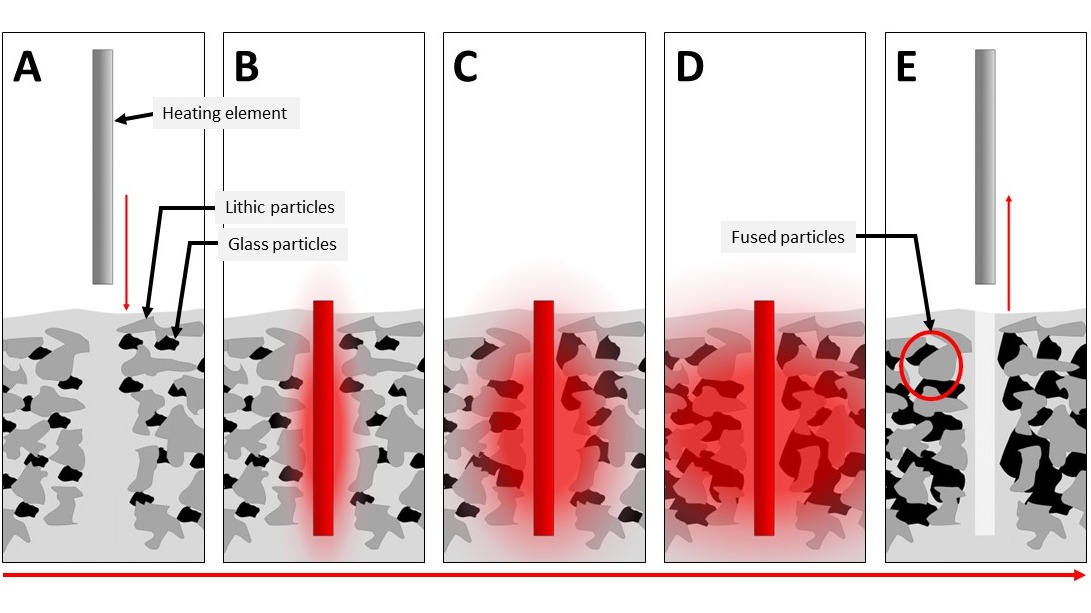Duration: 36 months
The creation of solidified subsoils is essential for future lunar exploration as they represent mechanically resilient areas for landing pads, roads or other foundations. To keep the production costs of these structures as low as possible, only local resources should be used (In-Situ Resource Utilization). Approaches investigated so far, such as laser, solar, or microwave sintering, can only transform the material close to the surface, while binder-based methods require additional material from Earth, leading to increasing costs. This proposed idea takes advantage of the considerable glass content of lunar regolith [1] as a binder between rock particles, enabling the sintering of deep areas of lunar regolith without the use of additives from Earth. The concept behind this idea is to insert a cylindrical heating element into the lunar regolith and heat it up. The heat is directly transferred to the regolith and softens the existing glass, making it stick to the lithic particles. This phenomenon is called viscous sintering and can already be observed in agglutinates, where glass fragments connect the lithic and mineral fragments [2]. The sharpness and high porosity of the lunar regolith as well as the vacuum atmosphere on the Moon may enhance the viscous sintering. As the viscous sintering process is expected to take place between the glass transition (which is only around 650°C-950°C [3]) and the softening temperature [4,5] of the glass, the process requires lower temperatures than conventional sintering, saving energy and allowing less complex materials to be used for the heating elements. Sintering at the process temperatures can be observed after only a few seconds to minutes and depends, among other environmental factors, on the chemical composition of the regolith [6]. Both Mare and Highland simulants with different glass quantities shall be investigated within the scope of the project.

